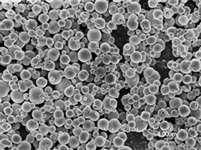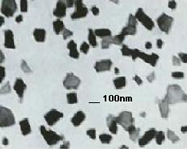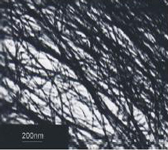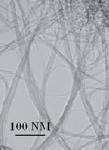|
|
|
1 Identification of substance:
Trade name: Nickel powder
Stock number: SN1601,SN1602,(SN10602,SN66185)
Manufacturer/Supplier:
Sun Innovations,Inc.
43241 Osgood Rd.
Fremont, CA 94539 |
|
2 Composition/Data on components:
Chemical characterization:
Description: (CAS#)
Nickel (CAS# 7440-02-0), 100%
Identification number(s):
EINECS Number: 231-111-4
EU Number: 028-002-00-7 |
|
3 Hazards identification
Hazard description:
Xn Harmful
F Highly flammable
Information pertaining to particular dangers for man and environment
R 11 Highly flammable.
R 40 Limited evidence of carcinogenic effects.
R 43 May cause sensitization by skin contact. |
|
4 First aid measures
After inhalation
Supply fresh air. If required, provide artificial respiration. Keep patient warm.
Seek immediate medical advice.
After skin contact
Immediately wash with water and soap and rinse thoroughly.
Seek immediate medical advice.
After eye contact
Rinse opened eye for several minutes under running water. Then consult a doctor.
After swallowing Seek immediate medical advice. |
|
5 Fire fighting measures
Suitable extinguishing agents Extinguishing powder. Do not use water.
For safety reasons unsuitable extinguishing agents
Water
Carbon dioxide
Special hazards caused by the material, its products of combustion or
resulting gases:
In case of fire, the following can be released:
Toxic metal oxide fume
Protective equipment:
Wear self-contained respirator.
Wear fully protective impervious suit. |
|
6 Accidental release measures
Person-related safety precautions:
Wear protective equipment. Keep unprotected persons away.
Ensure adequate ventilation
Keep away from ignition sources
Measures for environmental protection:
Do not allow material to be released to the environment without proper governmental permits.
Measures for cleaning/collecting:
Dispose contaminated material as waste according to item 13.
Ensure adequate ventilation.
Keep away from ignition sources.
Additional information:
See Section 7 for information on safe handling
See Section 8 for information on personal protection equipment.
See Section 13 for disposal information. |
|
7 Handling and storage
Handling
Information for safe handling:
Keep container tightly sealed.
Store in cool, dry place in tightly closed containers.
Ensure good ventilation at the workplace.
Prevent formation of dust.
Information about protection against explosions and fires:
Keep ignition sources away.
Protect against electrostatic charges.
Fumes can combine with air to form an explosive mixture.
Storage
Requirements to be met by storerooms and receptacles:
Store in a cool location.
Information about storage in one common storage facility:
Store away from oxidizing agents.
Store away from halogens.
Do not store together with acids.
Further information about storage conditions:
Keep container tightly sealed.
Store in cool, dry conditions in well sealed containers. |
|
8 Exposure controls and personal protection
Additional information about design of technical systems:
Properly operating chemical fume hood designed for hazardous chemicals and having an average face velocity of at least 100 feet per minute.
Components with limit values that require monitoring at the workplace:
Nickel and inorganic compounds, as Ni
mg/m3
ACGIH TLV 1.5, A5-inhalable particulate (metal)
0.2, A1-inhalable particulate (insoluble compounds)
0.1, A4-inhalable particulate (soluble compounds)
Austria Carcinogen
Denmark TWA 0.5
Finland TWA 0.1 (skin) Carcinogen
France VME 1; C3-Carcinogen
Germany Carcinogen
Hungary 0.005-STEL; Carcinogen (insoluble compounds)
Japan 1; 2B-Carcinogen
Netherlands MAC-TGG 1; Carcinogen
1 (insoluble compounds)
Poland TWA 0.25
Russia 0.05-STEL
Sweden NGV 0.5 (dust)
Switzerland MAK-W 0.5; Carcinogen
United Kingdom TWA 0.1
USA PEL 1
Additional information: No data
Personal protective equipment
General protective and hygienic measures
The usual precautionary measures for handling chemicals should be followed.
Keep away from foodstuffs, beverages and feed.
Remove all soiled and contaminated clothing immediately.
Wash hands before breaks and at the end of work.
Breathing equipment:
Use suitable respirator when high concentrations are present.
Protection of hands: Impervious gloves
Eye protection: Safety glasses
Body protection: Protective work clothing. |
|
9 Physical and chemical properties:
General Information
Form: Powder
Color: Black
Odor: Odorless
Value/Range Unit Method
Change in condition
Melting point/Melting range: 1453 degrees C
Boiling point/Boiling range: 2730 degrees C
Sublimation temperature / start: Not determined
Flash point: Not applicable
Flammability (solid, gaseous) Highly flammable.
Ignition temperature: Not determined
Decomposition temperature: Not determined
Explosion limits:
Lower: Not determined
Upper: Not determined
Vapor pressure: Not determined
Density: at 20 degrees C 8.908 g/cm3
Solubility in / Miscibility with
Water: Insoluble |
|
10 Stability and reactivity
Thermal decomposition / conditions to be avoided:
Decomposition will not occur if used and stored according to specifications.
Materials to be avoided:
Acids
Oxidizing agents
Interhalogens
Halogens
Sulfur
Ammonia
Dangerous reactions Very fine powder: spontaneously flammable in air.
Dangerous products of decomposition: Metal oxide fume |
|
11 Toxicological information
Acute toxicity:
Primary irritant effect:
on the skin: Irritant to skin and mucous membranes.
on the eye: Irritating effect.
Sensitization: Sensitization possible through skin contact.
Other information (about experimental toxicology):
Tumorigenic effects have been observed on tests with laboratory animals.
Subacute to chronic toxicity:
Nickel and nickel compounds may cause a form of dermatitis known as nickel itch. They may also cause intestinal disorders, convulsions and asphyxia. Airborne nickel contaminated dusts are regarded as carcinogenic to the respiratory tract.
Additional toxicological information:
To the best of our knowledge the acute and chronic toxicity of this substance is not fully known.
EPA-A: human carcinogen: sufficient evidence from epidemiologic studies to support a causal association between exposure and cancer.
IARC-2B: Possibly carcinogenic to humans: limited evidence in humans in the absence of sufficient evidence in experimental animals.
NTP-2: Reasonably anticipated to be a carcinogen: limited evidence from studies in humans or sufficient evidence from studies in experimental animals.
ACGIH A5: Not suspected as a human carcinogen: Not suspected as a human carcinogen on the basis of properly conducted epidemiologic studies in humans. Studies have sufficiently long follow-up, reliable exposure histories, sufficiently high dose, and adequate statistical power to conclude that exposure to the agent does not convey a significant risk of cancer to humans. Evidence suggesting a lack of carcinogenicity in experimental animals will be considered if it is supported by other relevant data.
The Registry of Toxic Effects of Chemical Substances (RTECS) contains tumorigenic and/or carcinogenic and/or neoplastic data for components in this product. |
|
12 Ecological information:
General notes:
Do not allow material to be released to the environment without proper governmental permits. |
|
13 Disposal considerations
Product:
Recommendation
Consult state, local or national regulations to ensure proper disposal.
Uncleaned packagings:
Recommendation:
Disposal must be made according to official regulations. |
|
14 Transport information
DOT regulations:
Hazard class: 4.1
Identification number: UN3089
Packing group: II
Proper shipping name (technical name):
Metal powders, flammable, n.o.s., nickel powder
Land transport ADR/RID (cross-border)
ADR/RID class: 4.1 Flammable solids
Item: 13b
Danger code (Kemler): 40
UN-Number: 3089
Description of goods: Metal powders, flammable, n.o.s., nickel
powder
Maritime transport IMDG:
IMDG Class: 4.1
UN Number: 3089
Packaging group: II
Proper shipping name: Metal powders, flammable, n.o.s., nickel
powder
Air transport ICAO-TI and IATA-DGR:
ICAO/IATA Class: 4.1
UN/ID Number: 3089
Packaging group: II
Proper shipping name: Metal powders, flammable, n.o.s., nickel
powder |
|
15 Regulations
Product related hazard informations:
Hazard symbols:
Xn Harmful F Highly flammable
Risk phrases:
11 Highly flammable.
40 Limited evidence of carcinogenic effects.
43 May cause sensitization by skin contact.
Safety phrases:
22 Do not breathe dust.
36 Wear suitable protective clothing.
National regulations
All components of this product are listed in the U.S. Environmental Protection Agency Toxic Substances Control Act Chemical Substance Inventory.
This product contains a chemical known to the state of California to cause cancer or reproductive toxicity.
Information about limitation of use:
For use only by technically qualified individuals.
This product contains nickel and is subject to the reporting requirements of section 313 of the Emergency Planning and Community Right to Know act of 1986 and 40CFR372. |
|
16 Other information:
Employers should use this information only as a supplement to other information gathered by them, and should make independent judgement of suitability of this information to ensure proper use and protect the health and safety of employees. This information is furnished without warranty, and any use of the product not in conformance with this Material Safety Data Sheet, or in combination with any other product or process, is the responsibility of the user. |
|
|














